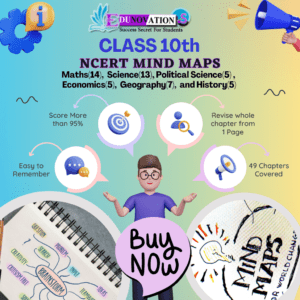Explore how the gender gap in Philippine STEM jobs report highlights key education-employment issues, with solutions proposed by UNESCO and IFC.
UNESCO-IFC Report Exposes Gender Gap in Philippine STEM Jobs Report
The latest global findings from UNESCO and the International Finance Corporation (IFC) have cast a spotlight on a persistent issue: the gender gap in Philippine STEM jobs report. Despite women achieving higher academic performance in education across the Philippines, their participation in the science, technology, engineering, and mathematics (STEM) workforce remains disproportionately low. The newly launched joint report calls for comprehensive reforms in education and labor systems to close this growing gender divide.
Academic Success Not Translating to STEM Employment
The report draws attention to a paradox in the Philippine educational landscape. Girls and young women dominate in academic achievements, particularly in tertiary education. However, this excellence is not reflected in the job market—especially in high-growth and high-pay sectors like STEM. The gender gap in Philippine STEM jobs report highlights that systemic barriers continue to hinder women’s access to STEM careers, keeping them underrepresented in industries critical to national development.
Key statistics include:
- Women make up 58% of tertiary graduates in the Philippines.
- Less than 30% of STEM-related positions are occupied by women.
- A wage disparity of up to 20% exists between men and women in technical fields.
These gaps not only reflect gender inequality but also signify lost economic potential, as entire sectors are deprived of talented, qualified female professionals.
Bridging Women’s Education to Jobs in the Philippines
Several institutional and cultural barriers were identified that contribute to this divide:
- Stereotypes in school curriculums and teaching methods.
- Lack of mentorship and support networks for young women entering STEM.
- Limited corporate policies that promote gender-inclusive hiring and career progression.
This disconnect between educational attainment and employment participation lies at the heart of the bridging women education to jobs Philippines issue, another keyword phrase that reflects the content’s core. According to the report, bridging this divide requires holistic policies from both public and private sectors.
International Support and Local Response
During the official launch in Manila, representatives from UNESCO and IFC emphasized the importance of integrating global frameworks with localized strategies. Ms. Stefania Giannini, UNESCO Assistant Director-General for Education, stated:
“The Philippines has an extraordinary opportunity to lead in gender-inclusive innovation. But that means dismantling the barriers that restrict women from thriving in STEM.”
Local government leaders, in partnership with civil society, have pledged to implement new gender-responsive educational reforms and labor incentives, including:
- Scholarship programs for women pursuing STEM degrees.
- Incentivizing companies to adopt family-friendly policies.
- Awareness campaigns in high schools to fight gender stereotypes.
The Role of IFC UNESCO Gender Employment Gap Philippines Report
The IFC UNESCO gender employment gap Philippines report provides data-driven insights into how educational pathways fail to convert into equitable employment for women. It calls for synergy between education systems and job markets to facilitate better transitions, particularly for women in technical sectors.
Findings also include:
- Women disproportionately exit the labor force after childbirth due to inflexible work environments.
- Leadership positions in STEM companies remain largely male-dominated.
- Internships and industry exposure opportunities are less accessible to female students.
Female Underrepresentation in Philippines STEM Fields
In sectors like engineering, tech innovation, and scientific research, female professionals make up a small fraction of the workforce. This female underrepresentation in Philippines STEM continues despite equal or superior academic scores in math and science among girls at the school level.
Root causes:
- Social norms discouraging girls from pursuing “masculine” fields.
- Workplace bias in hiring and promotion processes.
- Uneven access to job placement and internship programs.
This gap is also reflected in the absence of women in policymaking roles within STEM industries—highlighting the importance of role models and mentorship in shifting the narrative.
Women Wage Gap Philippines Education-Employment Disparity
The women wage gap Philippines education-employment mismatch is another recurring theme. Despite equal qualifications, women are consistently paid less in the same roles or excluded from career-advancing opportunities.
Key data:
- Women are twice as likely to work in low-pay, low-skill jobs.
- Women account for only 18% of managerial positions in STEM.
- Flexible work policies are implemented in less than 10% of tech firms.
Toppers Use Mind Maps to score more than 95%
-
NCERT Class 11th Commerce Mind Maps
Add to cartOriginal price was: ₹999.00.₹199.00Current price is: ₹199.00. -
NCERT Class 12th Chemistry Mind Maps
Add to cartOriginal price was: ₹199.00.₹75.00Current price is: ₹75.00. -
NCERT Class 12th Commerce Mind Maps
Add to cartOriginal price was: ₹999.00.₹199.00Current price is: ₹199.00. -
NCERT Class 12th Science Mind Maps
Add to cartOriginal price was: ₹999.00.₹199.00Current price is: ₹199.00. -
NCERT Mind Maps For Class 10th
Add to cartOriginal price was: ₹999.00.₹199.00Current price is: ₹199.00.
Purchase Today
Building Solutions Through Policy and Partnerships
Experts recommend the following multi-sector strategies:
🏫 Education Sector:
- Revise STEM curriculums to include women achievers.
- Offer early-career mentoring for female students.
- Promote inclusive school cultures.
💼 Corporate Sector:
- Implement workplace diversity audits.
- Offer gender-inclusive parental leave and re-entry programs.
- Train hiring managers in unconscious bias reduction.
🏛️ Government Initiatives:
- Fund women-specific internship and research programs.
- Encourage local governments to enforce anti-discrimination policies.
For additional learning on related topics, explore:
- 📘 Free NCERT PDFs
- 📚 NCERT Notes
- 📰 Current Affairs
- 🎥 Videos
- ✅ MCQs
- 📖 Syllabus
- 📦 Mind Maps
- 🎓 NCERT Courses
Expert Commentary: Voices Calling for Reform
Dr. Grace Alejandrino, a leading gender policy expert and professor at the University of the Philippines, noted:
“The gender gap in Philippine STEM jobs report is not just about numbers. It’s about dignity, economic justice, and equal access to the future.”
International consultancy Mart Ind Infotech also pointed out the digital divide affecting schools that don’t offer STEM pathways. Their tech-enabled school solutions aim to empower educators with tools to provide equitable learning, especially in underserved communities.
Frequently Asked Questions (FAQs)
Q1. What is the gender gap in Philippine STEM jobs report?
It refers to the disparity between high female academic performance and their underrepresentation in STEM-related jobs.
Q2. Why are women underrepresented in Philippine STEM careers?
Due to cultural biases, workplace inequality, and lack of mentorship and industry exposure.
Q3. What does the IFC UNESCO gender employment gap Philippines report reveal?
It shows how educational achievements are not translating into equal employment for women.
Q4. What’s the impact of the women wage gap Philippines education-employment disparity?
It limits career growth for women and results in lost GDP potential.
Q5. How can we bridge women education to jobs in the Philippines?
Through policy reform, corporate inclusivity, and early career interventions in schools.
Q6. What are the proposed solutions for the female underrepresentation in Philippines STEM?
Mentorship, scholarships, diversity in hiring, and inclusive educational content.
Q7. How does UNESCO support gender equality in education?
By funding global reports, advocacy programs, and education policy reforms.
Q8. How can companies reduce the gender wage gap in STEM?
Adopting gender audits, transparent pay structures, and flexible work policies.
Q9. How can students benefit from NCERT courses on these topics?
By gaining foundational knowledge through NCERT courses, free resources, and career guides.
Q10. Where can schools find help to build STEM capacity?
They can contact Mart Ind Infotech for customized digital infrastructure and curriculum support.





